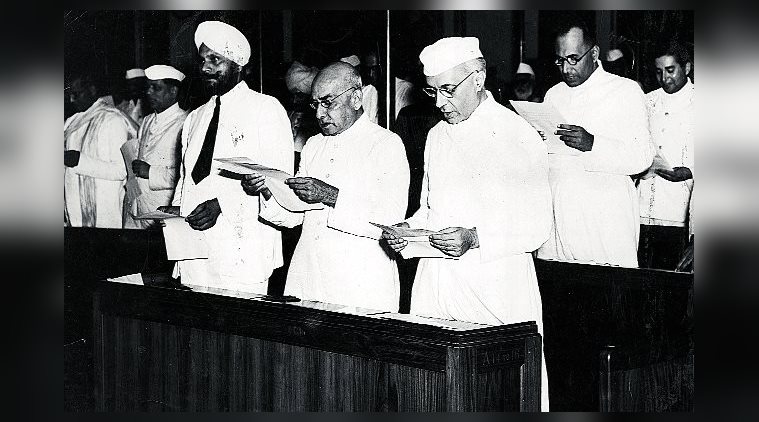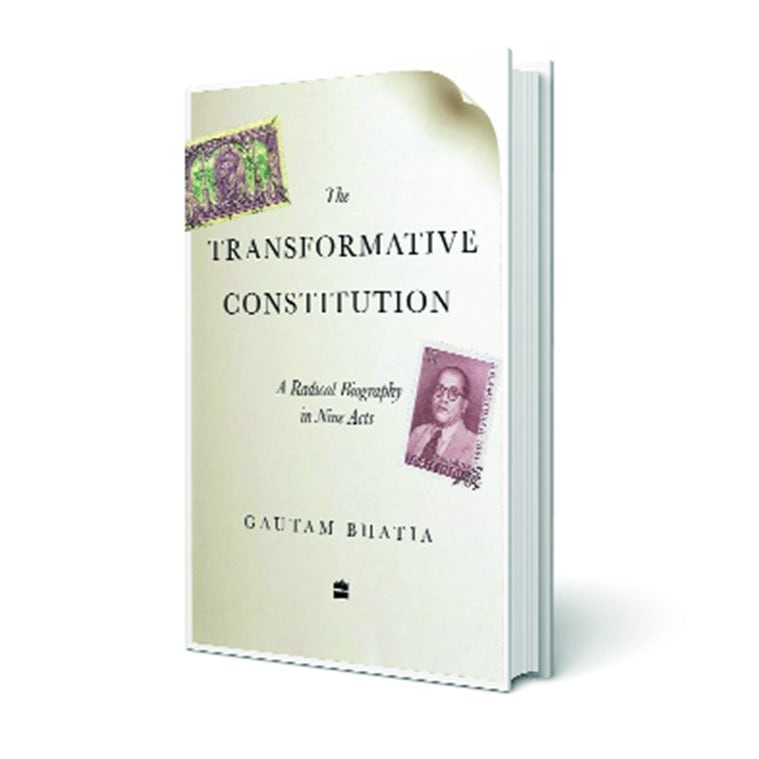
Title: The Transformative Constitution: A Radical Biography in Nine Acts
Author: Gautam Bhatia
Publisher: HarperCollins India
Pages: 544
Price: Rs 699
Reviewing a book on theatre in the 1890s, George Bernard Shaw asked: “Did these things really happen, Jackson?” This prompts the question: “Is this transformative Constitution for real, Bhatia?” The advent of Narendra Modi begs us to adjust our lenses. Not just admire the plumes, but look at the wounded bird.
Like others, our Constitution can be divided into two sets of texts: political texts (governing elections to political office) and justice texts (which are aspirational, including judicial powers, fundamental rights and directive principles). The courts are custodians of the justice texts. As far as the political texts are concerned, in 1950 the Constitution went into deep juristic crisis, was held together by Nehru, but eventually culminated in the Emergency (1975-77). The truth is that, far from being transformational, the political texts are vulnerable to hijack in the most ignominious way possible — so eloquently proved by defections, President’s Rule, collapsing federalism, money and muscle. The idea of “Modi”, founded on majoritarian power, is the latest hijack. The attempt to encase the political texts through the much-misunderstood concept of constitutional morality or its transformative cousin has failed to get traction. Justice texts are also vulnerable to failure.
But Gautam Bhatia is really concerned with judicial interpretations of the justice texts. Although Nehru’s transformative view, based on the Karachi Resolution (1931) and the Constitution’s Preamble, was socio-economic, the constituent assembly was wary of the gift of both the fundamental rights and directive principles. Many socio-economic aspirations were put on the back burner of non-enforceable, non-justiciable directive principles, which some called a “veritable dustbin of sentiment”. Thus, Act I of this transformation was partly stymied at inception. Fundamental rights were hemmed in by exceptions and limitations. A due process clause was abandoned and preventive detention was permitted by the Constitution as a fundamental right of government! Life and liberty had limited connotations.
Transformative Act II was the Nehru-Indira era with fights over property rights and Parliament’s power. Transformative Act III clearly belongs to Indira, which took us to the Emergency with the judiciary enmeshed by cowardice. Act IV represents how a Constitution at its lowest ebb faced its greatest challenge. A most significant revival of constitutional transformatives emerged with VR Krishna Iyer’s judicial gang of four and others restoring faith in the Constitution. This was a herculean task covering civil liberties, due process, socio-economic rights and the environment — perhaps the most meaningful transformation ever. I believe this has continued — recently personified by Justice Madan B Lokur. Act V represents the economic transformation of Manmohanomics supported by the judiciary — in many cases with deference, with exceptions like Justice Aftab Alam’s Novartis case. Act VI was really the increase of military presence in Punjab, Jammu and Kashmir, the Northeast and elsewhere. The judiciary stood by in the Armed Forces case. Pulwama and Balakot reinforce this.

Act VII represents the attack on Indian secularism in a number of diverse judicial decisions in which civil society faced the onslaught of the Sangh Parivar, not hesitating to profile and instigate mayhem, lynching and murder. Act VIII represents and promises to the poor for political purposes the Right to Information, education and MNREGA. This broadened a reserve to the constitutional hijack by Hindu majoritarianism and “popular” totalitarianism. Act IX running currently is the assertion of social liberalism on gender, the LGBT community, Aadhaar, triple talaq, Sabarimala, equality, privacy and identity. This was the work of a few judges.
For me, these are the phases of India’s transformative constitutionalism. But it is broadly this last area that Bhatia’s book addresses in terms of Equality, Fraternity and Liberty, including privacy. Yet there is an unevenness about these. We cannot rely on the NM Thomas case on reservation being part of equality without its and Indra Sawhney’s overtly caste-based reservations and basic structure reversals. The elevation of privacy to a free-standing constitutional right instead of a bundle of private rights was to be expected and is an achievement. The Supreme Court dithered initially on the LGBT question. Today, it continues to show deference to many statist claims. If these recent judgments push a path into the future, it is a splendid achievement, before mediocrity catches up with them.
Rightly or wrongly, Bhatia X-rays Indian judgments heavily through American jurisprudence. No real harm in that, except that those cases have an alien vocabulary. How did we use restrictive covenants connected with racism to Parsi freedom of association? I am all for cosmopolitan jurisprudence but not its deification, which shuts out originality. But leave all that. The essence of the book is that nine contextually understood judgments promise a great juristic future ahead. They do, but on steady and non-steady — even verbose — foundations, with judgments running into hundreds of pages. Some judges who are part of these untidy transformation judgments have lapsed in other cases (former chief justice Dipak Misra on criminal defamation, Justice DY Chandrachud on electoral appeals to religion). But every author is entitled to the wisdom of their selection.
I have always believed that the Constitution, far from being a self-fulfilling prophecy, is the site of struggle in various fora. The judicial forum is one of these and these judgments are promising examples with open, textured futures. Today, the Constitution is in immense danger — even from the judiciary. We need to reclaim the Constitution beyond the play in nine acts presented in this book. Having said that, Gautam Bhatia is an excellent jurist — the best among the best. A joy to read. There is much to learn from him.
The writer is a senior advocate at the Supreme Court.